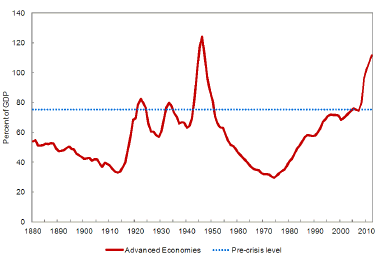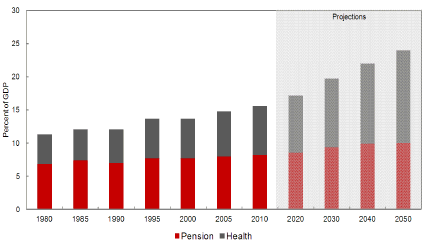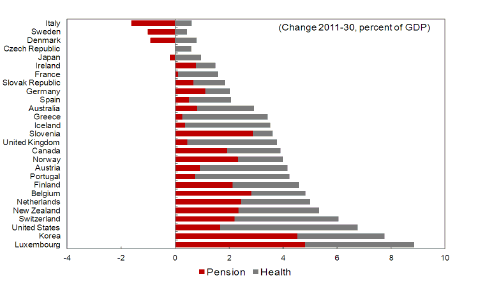Panel on "Stimulus or Stymied? The Macroeconomics of Recessions" American Economic Association Meetings, San Diego, January 6, 2013 Presentation by Carlo Cottarelli
January 6, 2013
American Economic Association MeetingsSan Diego, January 6, 2013
Presentation by Carlo Cottarelli
My remarks will focus on the role that fiscal policy can play in the current juncture.
Let me start with what happened in 2008. Some may recall 2008 as the year when Lehman collapsed; others as the year of the largest drop in the Dow Jones since the 1930s. But there was an even more unusual event: the IMF, for the first time in its history, called for a global fiscal expansion across all countries that could afford it. It had never happened before. Monetary policy had been seen as the tool to respond to a deceleration in economic activity, not fiscal policy.
This change of view about the role of fiscal policy reflected three considerations:
- First, it was felt that the magnitude of the shock to the world economy was so large that things could get out of control: it was not an ordinary recession.
- Second, we felt that, while the recession originated in a house price boom and financial sector misbehavior, it had turned into a demand recession: lack of demand, caused by uncertainty and rising unemployment, was driving output further and further down. In other words, Keynes’ General Theory was the relevant textbook.
- And third, with credit markets not working, the monetary lever was not working either.
We called for a fiscal expansion in spite of the fact that the state of public finances in 2007 was not particularly good by historical standards. Here is the public debt to GDP ratio in advanced economies since the 1880s: already in 2007 it was at a peak, with the exception of the World War II period. The further increase in debt after the crisis just made the outlook even weaker. Moreover, the entitlement shock was coming with pension and health care projected to rise by several percentage points of GDP over the coming decades. So, not a great fiscal outlook. But we felt the risks of a great depression were too large and justified a bold fiscal action.


Since then, two things happened. The world economy has started recovering, although slowly. Second, some of the risks that were arising from the sharp fiscal weakening did materialize, with some countries experiencing fully fledged fiscal crises.
Faced with these developments, most countries have initiated a phase of fiscal adjustment, a development that we have supported, taking into account the difficulty of maintaining credibility just by promising adjustment.
But even in this case we have underscored gradualism in implementing fiscal adjustment, whenever possible. This gradualism is justified by two reasons:
- First, multipliers are likely to be high at this juncture in which output is demand driven; indeed, in principle, it would be better to postpone the adjustment to a phase in which there is too much private sector demand, not too little.
- Second, there is the risk of what I called “too much of a good thing”: fiscal adjustment that leads to a large output deceleration can be counterproductive as markets become worried about the fall in GDP and interest rates rise instead of falling.
We have also argued that gradual fiscal adjustment should be accompanied by continued monetary relaxation. Other conditions being the same, fiscal tightening would tend to hamper growth, which would be bad in itself and for the fiscal accounts too. Of course, as much as possible, it is also important to introduce structural reforms to boost potential output over the medium term.
So, this is a summary of our views on what fiscal policy should do in the current circumstances: proceed with fiscal adjustment, cautiously, as far as possible. It reflects some assumptions and several unknowns, for which more research would be welcome:
First: how much of the current output loss with respect to the pre-2007 trend is cyclical and how much is structural? We assume that it is partly cyclical and partly structural. But we have underscored that, if the loss were entirely cyclical, then the fiscal outlook would be considerably better: structural deficit would be smaller than we currently think by some 2–3 percentage points of GDP.
Second, for how long interest rates will remain low? We assume that the combination of gradual adjustment and relaxed monetary conditions will allow interest rates to remain quite low for several years in spite of a further rise in debt levels. If this were not the case, the fiscal outlook would be weaker than we currently think.
Third, what is the fiscal medium-term multiplier? Most of the work on multipliers has focused on the short run but the medium-term impact is equally important, particularly because we are looking at the implication for growth of a series of fiscal tightenings, not a fiscal tightening in a single year.
Fourth, what is the impact of high public debt on potential growth? We think the negative impact is not trivial, based on available econometric evidence, but more research is needed.
Fifth, moving to a political economic perspective, is gradual fiscal adjustment possible? We have argued it is, but critics of our approach have argued that “cold turkey” is the only way to do it.
Finally, how bad are the long-term fiscal trends? These are the projected increases for pension and health care spending for advanced economies over the next two decades. The average increase is large: about one percent of GDP for pension spending and about 3 percentage points of GDP for health care. The large cross country differences reflect, in addition to demographics, our estimate of the impact that technological change will have on health care spending. The U.S. has one of the largest increases, a key problem for its fiscal outlook. The good news here is that other countries have succeeded in containing health care costs in the past without jeopardizing the welfare state. The key question is the extent to which the U.S. will be able to do so. I will stop with this question.

IMF EXTERNAL RELATIONS DEPARTMENT
| Public Affairs | Media Relations | |||
|---|---|---|---|---|
| E-mail: | publicaffairs@imf.org | E-mail: | media@imf.org | |
| Fax: | 202-623-6220 | Phone: | 202-623-7100 | |







